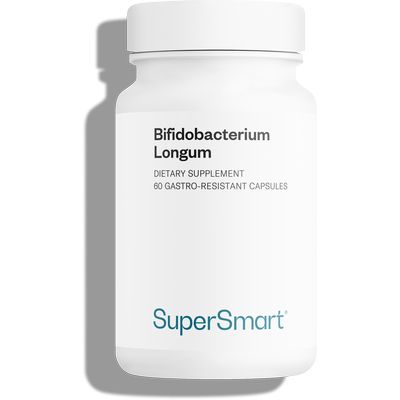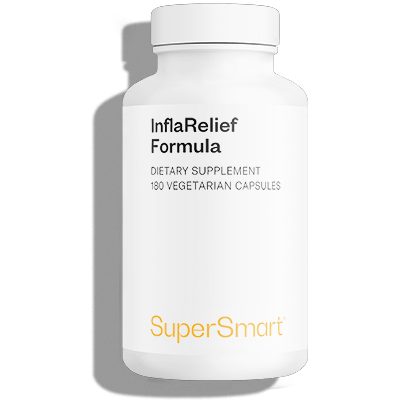12-03-2018
Chronic over-inflammation: the consequences of a bad diet stay with you for life
 Have you ever in your life hit a bad patch in terms of your diet? Have you found yourself eating junk food because you felt the need to at the time? Either because of ignorance or recklessness? If so, let’s hope it was for as short a period as possible, as a team of scientists has just demonstrated that a ‘Western’-style diet, ie, one high in saturated fat, salt, sugar and animal protein, reprograms the body and makes it more sensitive to pro-inflammatory factors1.
Have you ever in your life hit a bad patch in terms of your diet? Have you found yourself eating junk food because you felt the need to at the time? Either because of ignorance or recklessness? If so, let’s hope it was for as short a period as possible, as a team of scientists has just demonstrated that a ‘Western’-style diet, ie, one high in saturated fat, salt, sugar and animal protein, reprograms the body and makes it more sensitive to pro-inflammatory factors1. This is a significant finding since it’s not microbial infections that are the big killers these days but inflammatory disorders such as obesity, type 2 diabetes, and cardiovascular problems2. These are the stealth diseases that operate via largely unknown mechanisms, but are linked to our diet and immune system3.
What happens when we start to eat indiscriminately?
When we consume lots of ready meals, or ultra-processed, high-fat and high-sugar foods, the immune system reacts as if it has been attacked by bacteria1. There’s a sharp increase in the number of certain immune cells in the blood (primarily granulocytes and monocytes) and aninflammatory response is triggered in the body. Why does the body respond with such an apparently exaggerated immune reaction?
The body has two main ways of resisting attacks by various pathogens. The first, innate immunity, is quite simplistic but has the advantage of being incredibly fast. Some of our cells or proteins are able to recognise shapes or patterns which are naturally interpreted as ‘pathogens’ by the body. Normally, these patterns are common to several types of aggressor and evolution has taken care to ‘archive’ them in a kind of encyclopaedia. Thus TLR4 receptors located on the plasma membranes of certain immune cells bind to lipopolysaccharides, surface molecules present in many pathogenic bacteria. When a suspect pattern is detected, the alarm is raised, instantly triggering the large-scale recruitment of cells whose job it is to ruthlessly eliminate the intruders, via phagocytosis or chemical factors.
But this technique has its limitations: it relies on basic, repetitive mechanisms that are unable to adapt to the aggressor. Sometimes it doesn’t matter how many soldiers there are if they don’t have enough weapons to kill the enemy. This is where the second technique comes in, adaptive immunity, which is much more precise, if slower to establish. Particular immune cells called lymphocytes bind to the specific patterns of a given pathogen and then initiate production of tailor-made weapons: antibodies and cytotoxic T lymphocytes. These are specially conceived to fight particular pathogens and are infinitely reproducible. An example of them is kept in reserve in case the same pathogen has the temerity to mount another attack in the future.
When we eat an unhealthy diet, it’s the first technique that flounders. The researchers showed that one of the mechanisms responsible for detecting pathogenic patterns becomes abnormally activated, as if the immune system was interpreting the diet as a threat to the body. This ‘misinterpretation’ results in the formation of multi-protein complexes called ‘inflammasomes’ which trigger a whole cascade of inflammatory reactions, in particular the production of pro-inflammatory cytokines (including IL-1β and IL-18) 4.
This inflammatory state continues as long the diet remains the same, and can even become chronic as time goes on. On the other hand, if the person changes their diet, switching to raw and nutritionally-rich foods, the inflammation stops and on the face of it, everything seems to return to normal.
But in actual fact, the story doesn’t end there. The unhealthy diet has left its mark – one which could well prove problematic for the rest of an individual’s life …
How does a bad diet insidiously change the body?
In interpreting the unhealthy diet as an aggressor, the immune system automatically triggers an inflammatory response, and in doing so, significantly alters future immune responses! And this constitutes a a major discovery.
In fact, it seems that inflammasomes activate and alter a number of hitherto-unused genes – including those responsible for proliferation and maturation of innate immune cells. How do they do this? It’s likely that certain inflammasome-induced chemical messengers (including IL-1β) change the way in which genetic information is packaged, making it more accessible and readable. It’s somehow as if normally-hidden pieces of DNA are suddenly revealed in broad daylight, remaining permanently ‘visible’. It’s a clear example of epigenetic change: gene expression can be affected by the environment. But what are the long-term consequences of such changes?
Unlike inflammation, the genes switched on during a ‘fast-food’ period appear to remain active for a long time, even if you radically change your lifestyle. It seems clear too that these genes induce greater sensitivity to inflammation triggers. In a way, they prepare the body to deliver a more powerful immune response by increasing production of innate immune cells and by maintaining a state of hyper-vigilance and reactivity.
When what triggers innate immunity is genuinely harmful, this hypervigilance is not necessarily a bad thing but it can be disastrous if the body becomes over-sensitive to triggers which do not really pose a threat, since it’s this very hyper-sensitivity which can play a role in the development of auto-immune diseases. It’s the accumulation of innate immune cells (especially macrophages) combined with blood lipids which are likely to cause the plaque deposits characteristic of atherosclerosis. And it’s chronic inflammatory states which are thought to contribute to the development of all inflammatory diseases.
Put another way, the modern Western diet incites the body to recruit an army that’s more powerful, and above all, more sensitive. But such over-aggressive defences do the body no good at all! In fact, they encourage the development of chronic and pernicious inflammation, so characteristic of modern life. Along with falling levels of physical activity, it is undoubtedly the reason, at a time when scientific understanding has never been better, for one of the anomalies of our times: babies born today may have a shorter life expectancy than their parents.
More than 120 years ago, Thomas Edison predicted that "the doctor of the future will not treat the human frame with drugs, but rather will cure and prevent disease with nutrition". Even though research findings continue to support this sentiment, it seems we remain far from the future foreseen by Edison. In the meantime, it’s only you who can fight this silent inflammation, by keeping his words in mind and by following these two recommendations:
-
- Adopt a balanced diet that’s high in fibre, antioxidants and vegetable protein, and low in ultra-processed and high-fat, high-sugar foods.
- Fight inflammation by taking advantage of targeted products such as InflaRelief Formula or by boosting your gut flora with anti-inflammatory probiotics such as Bifidobacterium longum .
1. Anette Christ, Patrick Günther, Mario A.R. Lauterbach, Peter Duewell, Debjani Biswas, Karin Pelka, Claus J. Scholz, Marije Oosting, Kristian Haendler, Kevin Baßler, Kathrin Klee, Jonas Schulte-Schrepping, Thomas Ulas, Simone J.C.F.M. Moorlag, Vinod Kumar, Min Hi Park, Leo A.B. Joosten, Laszlo A. Groh, Niels P. Riksen, Terje Espevik, Andreas Schlitzer, Yang Li, Michael L. Fitzgerald, Mihai G. Netea, Joachim L. Schultze, Eicke Latz. Western Diet Triggers NLRP3-Dependent Innate Immune Reprogramming. Cell, 2018; 172 (1-2): 162 DOI: >10.1016/j.cell.2017.12.013
2. GBD 2015 Mortality and Causes of Death Collaborators (2016). Global, regional, and national life expectancy, all-cause mortality, and cause-specific mortality for 249 causes of death, 1980-2015: a systematic analysis for the Global Burden of Disease Study 2015. Lancet 388, 1459–1544.
3. Ridker, P.M., Everett, B.M., Thuren, T., MacFadyen, J.G., Chang, W.H., Ballantyne, C., Fonseca, F., Nicolau, J., Koenig, W., Anker, S.D., et al.; CANTOS Trial Group (2017). Antiinflammatory therapy with canakinumab for atherosclerotic disease. N. Engl. J. Med. 377, 1119–1131.
4. Labzin, L.I., Lauterbach, M.A.R., and Latz, E. (2016). Interferons and inflammasomes: cooperation and counterregulation in disease. J. Allergy Clin. Immunol. 138, 37–46.
Order the nutrients mentioned in this article

Now in gastro-resistant capsules. New acid-resistant delivery method. One of the most important microbacteria for intestinal health.
www.supersmart.comFurther reading
24-06-2019
Better known as PEA, palmitoylethanolamide is a natural and powerful active principle discovered in 1957. Since then, it has consistently been the subject of new...
Read more01-08-2018
Inflammation – whether unseen or painful – has always been at the root of a variety of incapacitating ‘diseases of civilisation’, such as cardiovascular disease,...
Read more29-07-2019
Magnesium has until now been mainly known as an essential mineral for nervous system balance, cardiovascular regulation, muscle function and bone health. Now it seems...
Read more© 1997-2026 Fondation pour le Libre Choix
All rights reserved
All rights reserved
Free
Thank you for visiting our site. Before you go
REGISTER WITHClub SuperSmart
And take advantage
of exclusive benefits:
of exclusive benefits:
- Free: our weekly science-based newsletter "Nutranews"
- Special offers for club members only


















